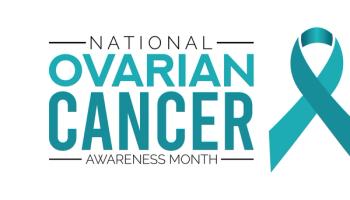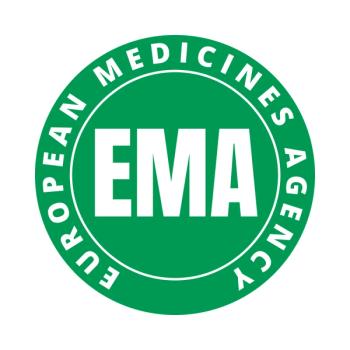
Ovarian Cancer
Latest News
Latest Videos

CME Content
More News

By 2021, neoadjuvant chemotherapy followed by interval cytoreductive surgery became the most common initial treatment for patients with advanced epithelial ovarian cancer, overtaking primary cytoreductive surgery.

Higher levels of ambient nitrogen dioxide may be linked to an increased incidence of ovarian cancer, while associations with other pollutants remain inconclusive.

The phase 2 PICCOLO trial demonstrated that mirvetuximab soravtansine (Elahere; AbbVie) is effective and tolerable in heavily pre-treated patients with folate receptor alpha-positive (FRα+), platinum-sensitive ovarian cancer.

Higher pre- and postdiagnosis Alternate Mediterranean Diet (AMED) scores are associated with improved overall survival in patients with ovarian cancer.

September marked Ovarian Cancer Awareness Month, highlighting the importance of early detection and the need for equitable treatment access.

The first-ever Low-Grade Serous Ovarian Cancer (LGSOC) Awareness Day is dedicated to raising awareness, providing resources, and advocating for more research into this rare and recurrent form of ovarian cancer.

NXP800 was granted orphan drug designation from the FDA in ARID1a-deficient ovarian, fallopian tube, and primary peritoneal cancers.

The European Medicines Agency's (EMA’s) Committee for Medicinal Products for Human Use (CHMP) has recommended the marketing authorization of mirvetuximab soravtansine (Elahere; AbbVie) for folate receptor alpha–positive (FRα+), platinum-resistant epithelial ovarian cancer.

Treatment with maintenance olaparib/cediranib demonstrated similar survival vs olaparib alone in platinum-sensitive relapsed ovarian cancer.

Researchers developed a pan-immune-inflammation–based nomogram to accurately predict overall survival (OS) and progression-free survival (PFS) in patients with epithelial ovarian cancer

Adding bevacizumab to the combination therapy of carboplatin and paclitaxel significantly improved progression-free survival (PFS) in patients with epithelial ovarian cancer (EOC) but not overall survival (OS).

Researchers found low rates of patient involvement in first-line ovarian cancer treatment decisions in Europe and the US from 2017 to 2020 despite the increasing use of targeted therapies, like poly (ADP-ribose) polymerase inhibitors.

Symptom-triggered testing via the fast-track pathway identified early-stage high-grade serous ovarian cancer in 1 in 4 women, potentially leading to better survival outcomes.

The accuracy of the cancer antigen (CA)–125 test in predicting ovarian cancer varies by ethnicity, primarily due to factors like age and comorbidities rather than ethnicity itself.

Hepatitis B virus (HBV) is associated with an increased risk of cervical cancer but not ovarian or endometrial cancers.

The involvement of 2 surgeons during cytoreductive debulking and bowel surgery in patients with epithelial ovarian cancer significantly reduces the rate of anastomotic leaks.

Patients with endometriosis have a 4.2-fold greater ovarian cancer risk, highlighting the need for further research into the biological links between endometriosis subtypes and ovarian cancer.

In part 2 of our interview, Diane Mahoney, PhD, DNP, FNP-BC, WHNP-BC, APRN, advocates for a multidisciplinary, community-centered approach to reduce ovarian cancer care disparities and stresses the need for ongoing exploration of social, biological, and environmental factors affecting health outcomes.

Diane Mahoney, PhD, DNP, FNP-BC, WHNP-BC, APRN, discusses her study on how social determinants of health impact the health perceptions of Black and Hispanic ovarian cancer survivors, highlighting significant health disparities.

Misleading ads are under scrutiny for their role in signing up consumers for Affordable Care Act (ACA) coverage without their permission; Sen Elizabeth Warren (D, Massachusetts) said there are enough votes in the Senate to suspend the filibuster to codify Roe v Wade in 2025 with a Democratic majority; women with endometriosis have about a fourfold risk of developing ovarian cancer.

Social determinants of health (SDOH) factors significantly impact the overall health perceptions of Black and Hispanic ovarian cancer survivors.

Metformin use is linked to improved survival rates in patients with ovarian cancer, particularly among those with diabetes and serous cancers, though further research is needed to confirm these findings.

Minority patients with gynecologic cancers are more likely than White patients to receive treatment at academic facilities, a recent study found.

Researchers found no significant differences in disease-free survival, overall survival, and recurrence rates between fertility-sparing surgery and radical surgery for patients with stage I epithelial ovarian cancer.

High neutrophil to lymphocyte ratio (NLR) and platelet to lymphocyte ratio (PLR) are associated with worse progression-free survival and 5-year overall survival in patients with ovarian cancer.


















































